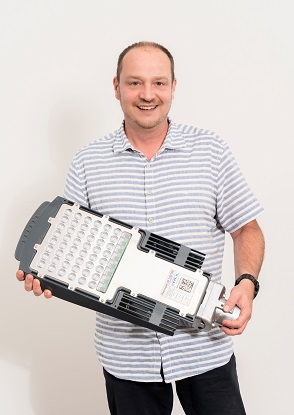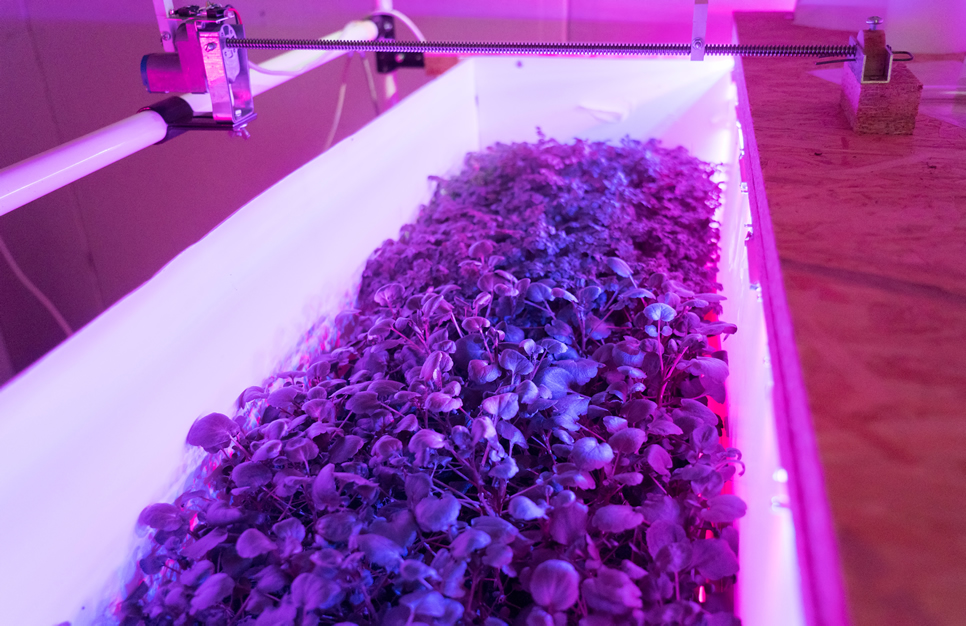
Zsolt Nagy, managing director of Lux Light Ltd
The Support of business RDI activities (VÁLLALATI KFI_16) was open to innovative businesses in the Central Hungary region. They could apply for funding for projects aimed at the in-house development of new, marketable products, services and technologies with significant intellectual added value or for RDI activities implemented independently or in consortium, reaching at least the prototype or MVP (minimum viable product) phase. The call was open to project proposals that fit in with one of the sectoral priorities identified in the National Smart Specialisation Strategy.
LEDs have completely changed the world of lighting and are expected to absolutely dominate almost the entire industry soon. This gives particular economic (and environmental) importance to LED development projects. Hungaro Lux Light Ltd has been dealing with the technology for two decades now, starting in the days when no one guessed that in addition to advertising boards and electronic devices these tiny diodes might also play a role in everyday lighting.
– Our company was founded 22 years ago. Although at the time we focused on manufacturing LED advertising boards, we started to realise that the technology could be suitable for lighting purposes as well – Says Zsolt Nagy, managing director of Lux Light Ltd. – The first LEDs with relatively efficient light utilisation appeared 13-14 years ago. Initially, we experimented with developing many different types of products, searching for the ones that could be manufactured and operated economically. Advertising boards and visual technology are much less sensitive to price than illumination technology where idea and creativity is much more important. However, in the light industry cost-effectiveness is paramount.
The company designed and manufactured the first light fixtures that were found economically viable by the customers for Alle shopping mall in Budapest ten years ago. Since then, they have rather focused on street lighting. Although their presence is natural for most of us, these lamps are premium appliances. They are used everywhere (more than 50 million chandeliers are used only in Europe), so a huge amount of energy can be saved if they are low consumption. However, they also have to be durable to withstand all weather conditions and avoid the need to replace parts or repair their highly complex structure too often.
– At that time we started to think how we could use LED for creating street lights. Our development efforts resulted in the PearlLight lamp family. Although we only wanted to reach the prototype stage, the project ended with sending a whole product family to serial production – the managing director continues. – Our partners at the time were the University of Pannonia and the Budapest University of Technology and Economics. They had accumulated a vast amount of knowledge on light technology and we could approach that knowledge from a business perspective to create the envisaged products.
The PearlLight lamp family is one of the few product families that were designed as LED lighting fixtures. Most LED products of the large lamp manufacturers are based on the designs of traditional lighting fixtures, so in other words, they only replaced halogen or other light sources with LED in existing lamps. Zsolt Nagy argues, however, that LEDs are only similar to other light sources in that they both emit light but they are different in all other properties so the underlying infrastructures should also be different. Hungaro Lux Light Ltd purchases the diodes from an external supplier (just as most companies in the sector) and design the lamp fixture, the electronic and thermal management around them.
The optics in the company’s light fixtures that direct and focus the light emitted by the LEDs are the result of world-class developments. The lenses and the beam-control mechanism behind them ensure that the LEDs effectively illuminate the required spot without expanding to a large area, while – when applied in cars for example – sparing the eyes of oncoming drivers. As you can see, LED has many beneficial properties but the complexity of the surrounding technologies is not one of them.
– LED is clearly the most efficient light source humanity has ever used. But in turn, it is extremely complicated – Zsolt Nagy says illustrating the challenges ahead. – It is very susceptible to overheating or any deviation from the ideal operating conditions. Our task is to design these ideal conditions around LEDs. If conditions are not good, it will not only reduce luminance but also shorten the service life of LEDs. If put together well, the LED system can operate for up to 80-100,000 hours. We try to put the system together well, and we concentrate on street lighting because this service life is so long that it makes manufacturing uneconomic for household usage.
The project proposal of Hungaro Lux Light Ltd, which was selected for funding in a Horizon 2020 call, was assessed in the second stage immediately after submission due to the advanced stage of the project. The project aimed at eliminating a problem in traditional light fixtures, namely when light falls on the glass (or plastic) covering the lamps at a low angle, the material lets through only a smaller part of the beam while the rest of the beam is reflected (i.e. not utilised). To fix this, the company developed (and brought to industrial production) an anti-reflective surface coating which lets (depending on the coating material) 92-95% of incoming light to pass the coating, instead of reflecting it. The system is so efficient that potential customers hardly believe it is true.
The company uses the experience gained in optics in designing street lights to implement its project funded under a Széchenyi 2020 scheme supporting business RDI activities. Recently, indoors plant growing initiatives received wide media attention for being able to use purple light to illuminate plants (e.g. salad), making conditions suitable for farming even under urban conditions. It is almost evident, that Hungaro Lux Light Ltd found a potential in illuminating plant farms. It soon became clear that these crops are very interesting, but also very expensive.
– Salads grown indoors without sunlight cost ten times more than greenhouse plants. So, in cooperation with the Szent István University in Gödöllő, we have developed a system which reduces production costs to a level in between free-grown plants and greenhouse production. – The system is completely closed, so it works well even in a container. It requires no pesticides and only a little water as it hardly evaporates. But the biggest novelty of our solution is that our LEDs can be taken the closes possible to the plants, and our optical devices can focus light ideally on them. The system can be used equally well in Scandinavia and in Africa, regardless of the weather conditions.







